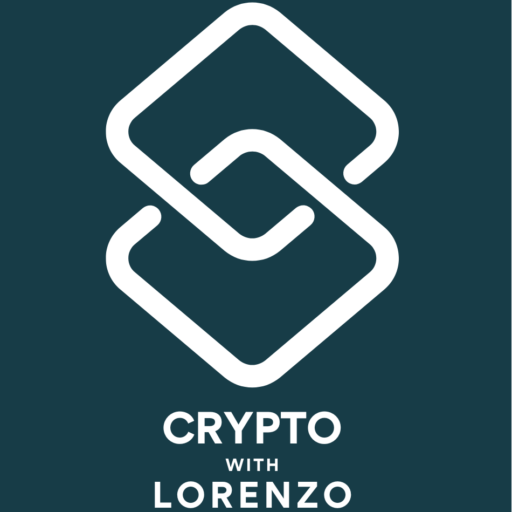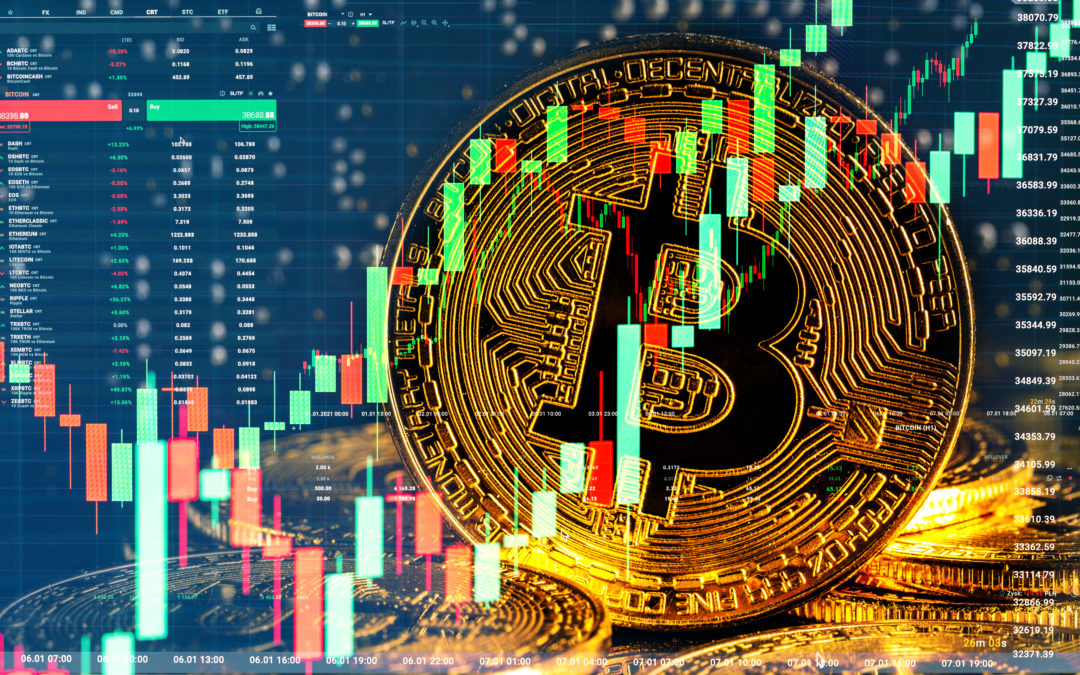What major events and trends could help propel Bitcoin, Ethereum, and many other digital assets to exceed their current all-time highs?
It’s been nearly two years since we witnessed this asset class hit a peak of ~$2.8 trillion invested into this nascent asset class. With a relatively flat market in recent weeks, the return of bullish activity is just around the corner.
Here is a list of the top six things to look out for. Let’s begin.
Bitcoin Spot ETF
This has been an increasingly discussed topic in this industry since BlackRock’s announcement that they’re filing a Bitcoin Spot ETF application with the United States Securities and Exchange Commission (US SEC).
A prominent crypto figure, Mike Novogratz, expects BlackRock to receive approval for their Bitcoin Spot ETF within six months.
Other players such as Fidelity, Ark Invest and VanEck, to name a few, are vying to become the first company to get the green light for this spot ETF. Besides them, Grayscale’s ongoing efforts to convert their Bitcoin Trust (with $18.3 AUM) to a spot ETF adds to bullish sentiment.
Despite BlackRock’s 99.8% (575 to 1) of ETF approvals, I am not banking on such a high success rate with the US SEC, particularly with Chairman Gary Gensler still at the helm. Nonetheless, someone will get one approved, albeit with plenty of state surveillance.
Before continuing, I will say that it is somewhat disappointing that there is such a heavy reliance on these corporate players to boost Bitcoin’s price. In contrast, more retail (everyday) investors could and should have done more to control Bitcoin’s circulating supply, but I digress.
It will be a matter of time before such a product gets the thumbs-up from the regulator. When it does, expect wild price volatility for BTC.
Corporate-backed stablecoins
The biggest one to hit the market yesterday is PayPal’s stablecoin, PYUSD, in partnership with the Paxos Trust Company (Paxos).
According to the fintech giant, the digital asset is backed 1:1 with the US Dollar using “highly liquid assets”, i.e., USD deposits, US treasuries and cash equivalents, from Paxos’ website.
As per transparency, the latter will provide monthly attestations via an “independent third-party accounting firm”, WithumSmith+Brown, PC.
Does Paxos sound similar? In February, the US SEC filed charges against Binance and Changpeng Zhao (its founder and CEO), as the regulatory body alleged that the BUSD stablecoin that Paxos issued is an unregistered security.
Fast forward six months, and PayPal has been given the all-clear to launch its stablecoin.
I’ll let you be the judge of all of this.
You also need to remember that a centralised entity, Paxos, will control PYUSD. Having said this, Tether and USD Coin (by Centre, issued by Circle) also fall under the same category.
Whilst it is unlikely for most people that their account will be frozen, bear in mind that the possibility is always there, unlike with Bitcoin, which is censorship resistant. This is one reason governments strongly encourage highly regulated alternatives they can (directly or indirectly) control.
A quick shout-out to Altcoin Daily for bringing this to the crypto community’s attention.
The PayPal stablecoin can be frozen!!! 🥶
RT for awareness! $PYUSD pic.twitter.com/mVvqJPfnTD
— Altcoin Daily (@AltcoinDailyio) August 7, 2023
Even though I’d rather use DAI, from MakerDAO, a decentralised autonomous organisation, or better still, an asset tied to a permissionless, open system like Bitcoin or Ethereum, I welcome fintech innovations providing much cheaper and faster international currency transfers for everyday people who use legacy financial systems.
I expect more of these institutional stablecoins to increase in popularity, whether for retail or corporate clients. As per the latter, JP Morgan Chase & Co., the largest bank in the USA, offers JPM Coin to conduct cross-border payments through its permissioned (private) blockchain.
2024 Bitcoin Block Reward Halving
Why is there so much hype surrounding this event, even though it is more than 200 days away?
Well, this generally acts as a precursor to a market-wide bull run, like those experiences in 2013, 2017 and 2021.
Notice the pattern here? This four-year gap based on Bitcoin’s price history leads many to believe that 2025 will be another memorable time for BTC and altcoin holders.
Of course, past performance is no guarantee of future results, but the more this global asset class becomes mainstream, the harder it will be for its detractors to shut it down; they missed that boat about six or seven years ago.
I have discussed this halving event a few times since the start of 2023, so I will refrain from repeating myself. Check out this article to learn everything you need to know about this.

Image by Natali _ Mis on Shutterstock
A suite of Ethereum upgrades
There’s nothing more ridiculous than being asked to fork out dozens of dollars and, in some instances, over $100 to process just one ETH transaction.
Then there’s the issue of slower transactions due to limited throughput (transactions per second). Ethereum’s blockchain currently processes about 30 TPS, which includes assistance from L2s and sidechains.
To resolve these and other problems on its network, Ethereum Improvement Proposals (EIPs) give us a clear understanding of what is in the works to improve the leading smart-contracts platform and retain its dominance.
Two major upgrades relating to Tx fees, throughout and finality, include zero-knowledge rollups and sharding (EIP-4844), a.k.a. Proto-Danksharding.
In conjunction with layer-2 scaling solutions (L2s), these will all help contribute to significantly lower ETH transaction (gas) fees whilst maintaining network security and decentralisation.
I know that L2s are helping with this, but much more needs to be done, especially for beginners wanting to interact directly with decentralised exchanges (DEXes), NFT platforms, etc.
Before moving on, account abstraction on Ethereum is another feature to watch, which will simplify how people use and manage their Ethereum wallets.
This will offer major advantages to crypto beginners – many of whom are neither knowledgeable about nor interested in many of the technical aspects of blockchain tech – wanting to use Web3 services.
This improved user experience while maintaining robust network security and sufficient decentralisation will be key in remaining relevant in this space, with rival blockchains aiming to boost their Web3 market share in terms of $ and %.
If a private key and seed phrase are lost, they can never be recovered and the assets they control are frozen forever… Account abstraction will solve this problem by using a smart contract to hold assets and authorize transactions.
Ethereum website
For a helpful summary of account abstraction, I recommended this explainer from Binance Academy.
US inflation, interest rates and stock markets
There is a lot to unpack here, and I could dedicate an entire article specifically to these matters, but I will touch on these here.
The US Federal Reserve’s interest rate current sits at 5.5%, a massive jump from 0.1% for roughly two years during the pandemic. Despite another rate hike looking likely for the September Fed meeting, I question how much higher it will go, even as it attempts to lower inflation to around the 2% p.a. mark.
I am far from an expert in this field, but there is only so far these rates can go without completely tanking the American economy, with over $32.6 trillion of public debt, not to mention all of the personal and corporate debt that exists.
Eventually, once inflation returns to the ideal figure – which currently sits at 3%, so not long now – I expect more money to flow through the economy and into the stock market.
How does this relate to Bitcoin and the crypto market? Once interest rates peak, this greater consumer confidence and tendency to invest in stocks will inevitably inject more funds into crypto markets.
Nonetheless, when you consider the tens of trillions of dollars in highly-liquid M0 and M1 money, alongside even just a fraction of M2 and M3 money, there is definitely a strong opportunity for BTC and other digital assets to already be much closer to their respective all-time highs.
The complete collapse of the USD would benefit Bitcoin holders in many ways, but I will elaborate on this idea in a future article.
<iframe src=’https://d3fy651gv2fhd3.cloudfront.net/embed/?s=fdtr&v=202307261816V20230410&d1=19230904&h=300&w=600′ height=’300′ width=’600′ frameborder=’0′ scrolling=’no’></iframe><br />source: <a href=’https://tradingeconomics.com/united-states/interest-rate’>tradingeconomics.com</a>
2024 United States Presidential Election
2016 was renowned as the “Twitter Election”; now 2024 is colloquially called the “Bitcoin Election”.
With a growing need to create clear crypto regulations in the US – now having to play catch-up to many other economies – not to mention BTC setting higher prices each election, this asset class will become a stronger point over time for American voters.
Bitcoin is becoming increasingly discussed amongst presidential candidates and/or prominent US political figures on both sides of the political spectrum. These include:
– Robert F. Kennedy Jr. announced that he bought two BTC for each of his seven children;
– Florida Mayor Francis Suarez, who accepts BTC donations and has been paid his salary in the decentralised digital asset since 2021;
– Ron DeSantis said in a campaign video last week that he will fight “Biden’s war on Bitcoin and cryptocurrency.”
“We’ll also reject the Federal Reserve’s attempt to impose a central bank digital currency on the American people.”
Ron DeSantis (July 31, 2023).
Growth of Ordinals and smart contracts on Bitcoin’s blockchain
Whilst this doesn’t have as much weighting on Bitcoin’s imminent price activity versus matters discussed earlier, it is still worth acknowledging here.
The introduction of ordinal inscriptions (Ordinals), a.k.a. “Bitcoin NFTs”, defies the (once) widespread belief that Bitcoin lacked smart-contract functionality and would only be useful as a store-or-value and as a payment method, albeit with limited uses.
Stacks – a crypto project helping bring smart-contract functionality to Bitcoin’s network – and its native asset STX, have also benefited from the massive interest in Bitcoin NFTs.
In a nutshell, metadata covering various use cases – invoice numbers, payment references, document attachments, NFT and other digital artefacts – can be linked to a particular satoshi. As one BTC = 100 million satoshis, the number of inscriptions is practically endless, per se.
A whopping 22.5 million Ordinal inscriptions have been created, representing huge growth since launching in January. Expect even fast growth as bullish sentiment returns to the space.
This enthusiasm for Ordinals has benefited another crypto project, Stacks. This functions as an additional layer for Bitcoin smart contracts and dapps. Its related crypto, STX, has achieved over 200% growth YTD, outperforming ~93% of digital assets in 2023 across the top 200, 500 and even 1000 cryptos.
Check out the official Ordinals website for the latest inscriptions being made. I made this piece last month covering Ordinals and other important features on Bitcoin’s blockchain for a more detailed overview.
Final thoughts
Even though the 2024 Election is about 15 months away, I know (even as someone who’s never visited the US) that discourse about this election will become more common and intense in the lead-up to November 5.
Pardon the cliché, but considering how quickly time flies, and by the time you’re reading this, I imagine this election and most of the events will be launched or occurring much closer than you think.
What other topics should be included here? I look forward to your comments.
If you enjoyed this article, I recommend following my Medium page for regular reports about crypto assets, blockchain technology, and more. Feel free to check out my publication as well, Crypto Insights AU.
Thanks for your support.
Disclaimers
- N.B. None of this is financial advice; I am not a financial advisor. You are solely responsible for crypto investments, let alone in any asset class.
- The opinions expressed within this piece are my own and might not reflect those behind any news outlet, person, organisation, or otherwise listed here.
- Please do your research before investing in any crypto assets, staking, NFTs and other product affiliated with this space.
- For transparency, Bitcoin (BTC) represents about 25% of my crypto portfolio.
Featured image by rzoze19 on Shutterstock.

